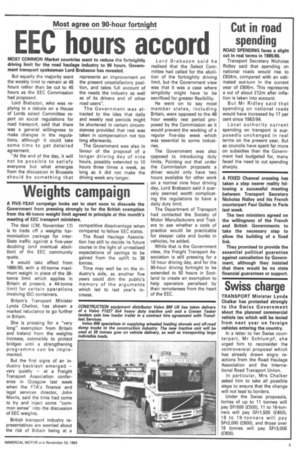Weights campaign
Page 5

If you've noticed an error in this article please click here to report it so we can fix it.
A FIVE-YEAR campaign looks set to start soon to dissuade the Government from pressing strongly to for the British exemption from the 40-tonne weight limit agreed in principle at this month's meeting of EEC transport ministers.
The deal (CM, November 17) is to trade off a weights harmonisation package for interState traffic against a five-year doubling (and eventual abolition) of the EEC community quota.
It would take effect from 1989/90, with a 40-tonne maximum weight in place of the 38tonne limit which applies in Britain at present, a 44-tonne limit for certain operations involving ISO containers.
Britain's Transport Minister Lynda Chalker, has shown a marked reluctance to go further in Britain.
She is pressing for a "very long" exemption from Britain and Ireland from the weights increase, ostensibly to protect bridges until a strengthening programme can be implemented.
But the first signs of an industry backlash emerged — very quietly — at a Freight Transport Association conference in Glasgow last week when the FTA's finance and legal services director, John Morris, said the time had come to try and inject some "common sense" into the discussion of EEC weights.
British transport industry representatives are worried about the risk of Britain being at a competitive disadvantage when compared to fellow EEC states.
The Road Haulage Association has still to decide its future course in the light of unrealised expectations of savings to be gained from the uplift to 38 tonnes.
Time may well be on the industry's side, as another five years could dim the public's memory of the arguments which led to last year's increase.
































































































